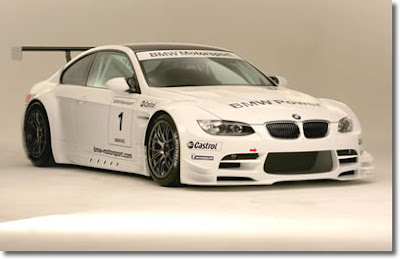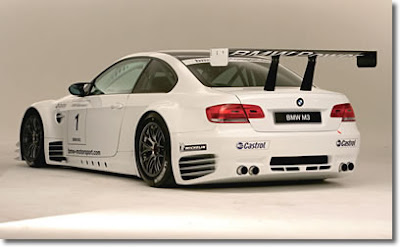
In the course of developing the race version of the BMW M3, BMW's engineers were faced with an ambitious task: to improve upon the sportiness of an already sporting car. A better base would, though, be difficult to find. In standard form the vehicle delivers powerful dynamics and sporting aesthetics. Thanks to an eight cylinder engine producing 414 bhp, BMW's customers are provided with a unique driving experience.
Those engine blocks, cast in BMW's light alloy foundry in

The race version of the BMW M3 is clearly aimed at the top echelon of motorsport. As such, it is no surprise to discover that in the course of its development, begun in mid-2007, numerous Formula One techniques were applied. These include computational fluid dynamics (CFD) and wind tunnel analyses, both of which have ensured the best possible aerodynamic package for the BMW M3.
Intelligent control systems have been incorporated throughout the BMW M3. The POWER400 control unit actuates all the accessories fitted to the car, such as lights, wipers, etc., via two bus systems. Traditional relays and fuses are thus eliminated, ensuring considerable weight saving, improved reliability and ease of application. The functions of the BMW P65 engine are managed by an ECU 408 electronic control unit, developed in-house by BMW Motorsport. The software and applications, too, have been developed by the experts in

An intensive test program, during which the performance of the race car will be honed by BMW Motorsport, looms for the BMW M3 over the coming months. Development drivers will be BMW works drivers Andy Priaulx (GBR), Jörg Müller (GER) and Augusto Farfus (BRA), currently racing in the FIA World Touring Car Championship (WTCC). The aim is, after all, for the BMW M3 to be an immediate front-runner upon its comeback to the American Le Mans Series.